This story was originally published by the School of Planning on February 3, 2023.

This year, the PLAN 211: Design Studio Foundations course, taught by Dr. Katherine Perrott, has partnered with the Sustainability Office to produce urban design visualizations that explore the possibilities of what the future of the University of Waterloo campus could look like when meeting the University’s sustainability goals. The students’ first project was to create a general idea of a sustainable campus by submitting prompts into the new cutting-edge technology: DALL-E 2.
Pictured from left to right: Valentina Casas, Paige Thompson, Kavishka Gomes, Tim Ross & Michael Barone.
DALL-E 2 is an artificial intelligence (AI) system that can design an entire image based on written prompts and was created by the same developer as ChatGPT: Open AI. It can recreate photos and art in a range of artistic styles, or design something never seen before. DALLE-2 opens many possibilities for creation and discovery. Being new, there is still much to discover about the platform and its potential. For design instructor Dr. Perrott, “it is important to show students how AI can be an appropriate tool for idea generation and exploration as long as students clearly acknowledge AI use as part of the broader creative process.” Her goal is to facilitate opportunities for students to critically engage with, and evaluate, new technologies like DALLE-2.
The final product is a studio gallery wall showcasing unique visualizations of what a sustainable future campus could look like, each one designed by a PLAN 211 student using DALL-E 2. The posters highlight biophilic design with nature, enhanced paths for walking and cycling, transit, water features, vibrant public spaces, and outdoor learning spaces. Each poster provides insight into sustainability, future campus design, and the use of AI in this context. Future assignments in PLAN 211 will generate ideas more specifically focused on the University of Waterloo and what our campus could look like in a sustainable future.
Be sure to visit the studio gallery, located in the corridor beside the Design Studio (EV3 2402) on the second floor of EV3, over the next 2 weeks.
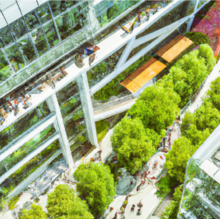

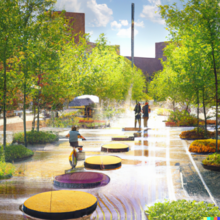

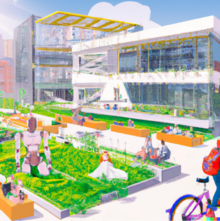
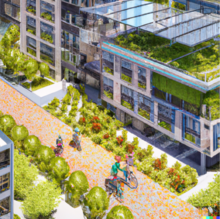
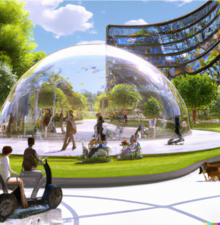
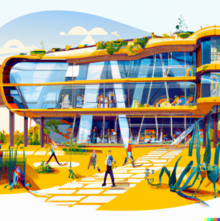




Pictured from left to right: Corridors of Trees and Gardens by Xavier Costa, Urban Futures by Cherilynne Chau, Streetscape Future by Khalil Heron, Is It Green by Dylan Schnurr, Tomorrow Terra Firma by Mariella Leccese, Futurama by Adrian Li, Green Oasis by Maryam Hamdan, Karesansui by Ealy Fong, Uoftopia 2050 by Kavishka Gomes, Shangrila by Tim Ross, Beyond Tomorrow by Alley Poon, and DALL-Eance by Valentina Casas.